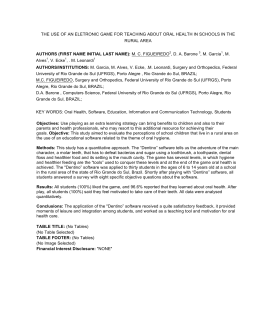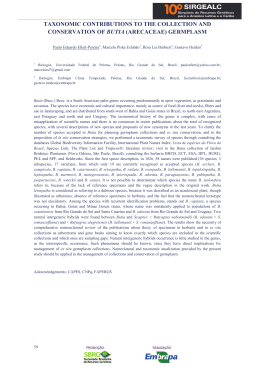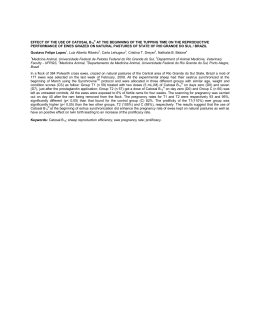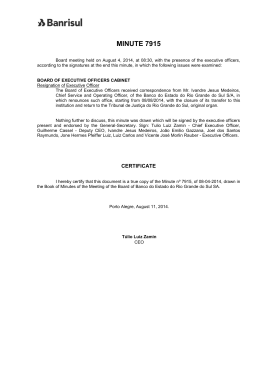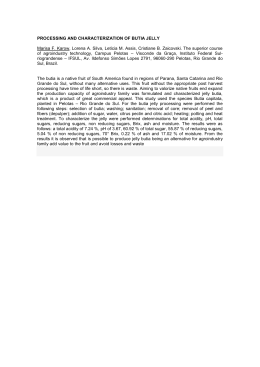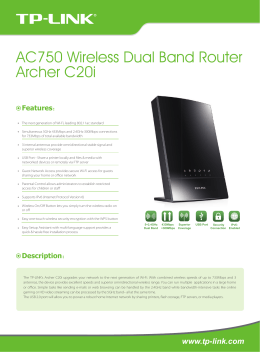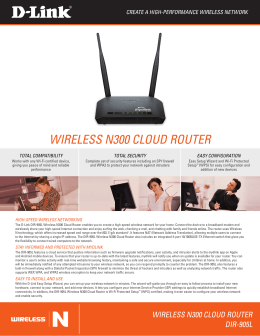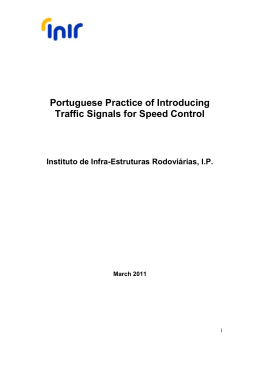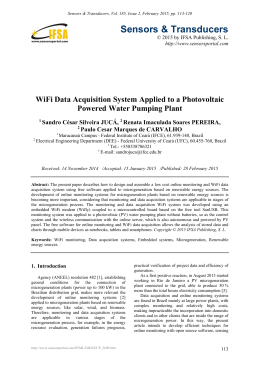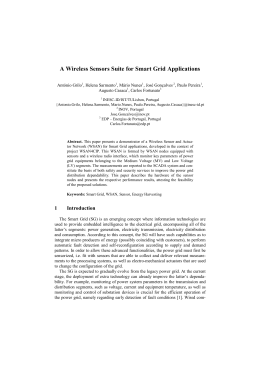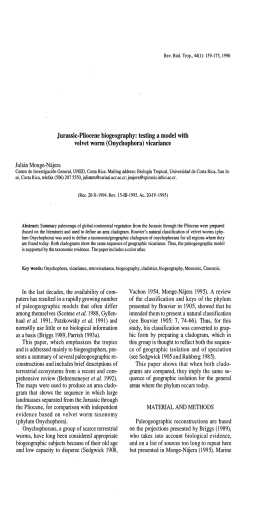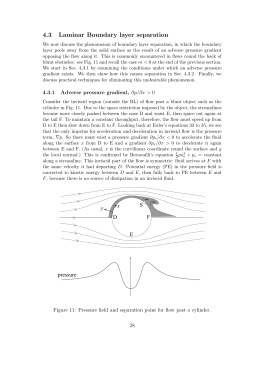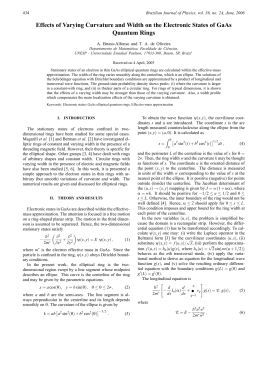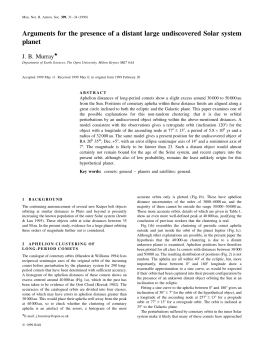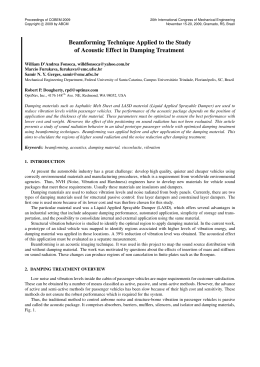Mobile Remote Monitoring Of Biological Signals Murilo F. da Rocha, Dario F. G. de Azevedo, Thais Russomano, Márcio V. Figueira and Sérgio Helegda Abstract— This research purposes the development of a telemedicine system, which is capable of remote monitoring and digitalization of the patients biological signals. It includes a mobile device which transmits the patient electroencephalogram (EEG) and electrocardiogram (ECG) to a monitoring host using the wireless communication, allowing mobility to the patient in hospital or in his dally routine. I. SENSORS AMPLIFIERS INTRODUCTION Patients searching for medical care in hospitals often face several problems, such as no vacancy, high cost, risk of infection, lack of mobility, adaptation to a strange environment and the food, lack of productivity, isolation from professional environment, among others. This work reports the development of a telemedicine system that is capable of remotely monitoring ECG and EEG signals. A device is attached to the patient so that the acquisition, processing, analysis and transmission of the biological data are automatically performed. The user end device of the telemedicine system, named User Terminal (UT), is connected to a wireless transmitter. This arrangement allows the UT to send information through the wireless network, so that the biological data information can be received in a Monitoring Host (MH), where the medical doctors analyze the data through internet. The UT sends the biological data to the MH on a real-time basis. This feature allows the patients to stay in their houses or offices and move around freely. II. MATERIALS AND METHODS: The following blockdiagram (Fig. 1) shows the several protocols and ways of communications between the parts of this solution. Each link performs one or more different possibilities of communication. DSP PROCESSOR WIRELESS WIFI INFRARED WIRELESS BLUETOOTH Fig. 1. Blockdiagram of this system. Sensors are attached to the patient and are connected to a microcontrolled device for filtering, A/D conversion, digital signal processing, primary analysis, data encoding and transmission to the MH via a wireless transmitter connected to the UT (Fig. 2). Sensor Cables Analog Hardware Wireless transmitter Digital Hardware Fig. 2. Blockdiagram of the UT. A differential amplifier [9] (DA) (Fig. 3) has been used to amplify the electrical signal from the heart M. F. da Rocha is with the Pontifical Catholic University of Rio Grande do Sul, Brazil (email:[email protected] ). D. F. G. de Azevedo is with the Pontifical Catholic University of Rio Grande do Sul, Brazil (email:[email protected] ). T. Russomano is with the Pontifical Catholic University of Rio Grande do Sul, Brazil (email:[email protected] ). M. V. Figueira is with the Pontifical Catholic University of Rio Grande do Sul, Brazil (email:[email protected] ). S. Helegda is with the Pontifical University Catholic of the Rio Grande do Sul. Porto Alegre, RS, Brazil. (e-mail: [email protected] ). Sensor AD N Cables Fig. 3. Blockdiagram of the analog hardware. LP Digital Hardware The interference from the AC electric power system is quite high so that the UT includes a notch filter (N) in the frequency of 60 Hz [1]. Before sending this signal to the digital module of the UT, it is filtered and amplified. A low-pass filter (LP) reduces the noise level as well the highest frequencies from the ECG and EEG. The UT digital module (Fig. 4) is controlled by a iMX microcontroller [7], [8]. It is a dual core hybrid processor. The first core is based on ARM technology, common used on PDAs due to its connectivity. The second core is a DSP (digital signal processor) which rapidly process digital data (for real time systems). The iMX have an ideal combination for portable applications wireless: low price, good performance and low consumption of power. fibrillation, skipped beat, PVC (premature ventricular contraction), R-on-T, Bigeminy, Trigeminy, Interpolated PVC and APB (atrial premature beats) [2], [3], [16]. If the parameters are within the programmed limits [2], [3], the device sends the statistics information of these parameters using the wireless network. This happens on determined time intervals to ensure the communication link between the patient and the MH [4]. These informations are transmitted using communication protocol wireless [5]. All the information about the patient and monitored data are available on the Internet. The patient and the operator can access the status data. The doctor can access the data and change the monitoring configurations and verify the ECG or EEG waveform patient data. Both the waveform and the parameters are presented in the patient’s homepage. The web pages were developed using HTML [6], JavaScript [11] languages and MySQL [9] data base. Clock Generation III. RESULTS: Analog Hardware iMX wireless transmitter Fig. 4. Blockdiagram of the digital hardware. The biologic signals are digitalized by a high quantization and high digitalization ADC connected to the DSP processor. Normal Bradycardia Tachycardia Asystole Skipped Beat The UT and MH functions were fully tested in laboratory: sensor interface, amplifiers, A/D converter, signal processing algorithms, user interface, communication protocols and MC software. Transmission delays were measured [3], [12]. Simulation of the several programmed arrhythmia was performed and validated by medical doctors. The new technique proposed in this work allows detection of short time arrhythmia or waves altered brain [14], [15] that occur on specific situations of the patient daily life. Once the cardiac parameters and waves of the brain are transmitted to and recorded at the MH in a daily basis, there is a great increase in the monitoring of the patient cardiac and brain system. In a busy hospital environment, short time arrhythmia and waves altered brain may not even be detected. In most cases, the patients who have used the telemedicine system proposed in this work, have successfully lived normally with his relatives and friends within his family and work environment. PVC R-on-T Bigeminy Trigeminy Interpolated PVC APB Fig. 5. Arrhythmias. The UT monitors the heart rate and the interval times between the R pulses of the ECG against the specified limits. This allows the MC to identify several cardiac arrhythmias [1] (Fig. 5): bradycardia, tachycardia, asystole, ventricular IV. CONCLUSION The telemedicine system proposed in this work was successfully designed, implemented and tested in laboratory. The system functions were implemented and validated. Validation with patients remains to be performed. Automatic analysis of other medical parameters is under development and should improve the whole system The telemedicine system presented in this paper aims to identify cardiac arrhythmias and altered brain waves. However, the proposed system also allows the measurement and recording of several other important parameters, such as blood pressure, body temperature, etc. The use of the wireless network imply real-time operation, becoming a great differential of this system: the monitoring of the heart and brain in real time. For commercial purposes, it is necessary the development of security levels, like password checks and cryptography. These applications were not implemented yet. The application Location Based Service (LBS) may empower this solution delivering the information about the location of the patient reducing the time to his rescue. . REFERENCES [1] W. Tompkins, J. Webster, “Design of MicrocomputerBased Medical Instrumentation”, 1981. [2] D. Azevedo, “Iniciação à Eletrocardiografia”, 1999. [3] W. Deccache, "ECG de Bolso", 2001. [4] Telecommunications Industry Association “ANSI/TIA/EIA-136-350-A-2000”, 2000. 2000, [5] IEEE - Institute of Electrical and Electronics Engineers - Normas técnicas dos protocolos BlueTooh e Wi-Fi. http://www.ieee.org/, 2005. [6] J. A. Ramalho, “HTML4: teoria e prática”, 2000. [7] Freescale, “iMX xx Family - User’s Guide”, 2005. [8] Analog Devices, “AD623”, 1999. [9] R. Prates, “MySQL - Guia de Consulta Rápida”, 2000. [10] J. Evaristo, “Programando em Linguagem C”, 2001. [11] J. A. Ramalho, “JavaScript : prático e rápido”, 2002. [12] A. C. Guyton, “Neurociência Básica”, 1991. [13] A. C. Guyton, “Anatomia e Fisiologia do Sistema Nervoso”, 1976. [14] J. Delay, G. Verdeaux, “Electroencefalografia Clínica”, 1967. [15] L. R. P. Junior, “Eletroencefalogramas Básicos”, 1990. [16] D. F. G. de Azevedo, E. P. de Moura, M.C. F. de Castro, F.C.C. de Castro, T. Russomano, “Telemedicine: Remote Monitoring of Cardiac Patients,” in Proc. 25th Ann. Intl. Conf. IEEE Eng. In Méd. and Biol. Soc., EMBC’03, Cancun, Mexico.
Download

